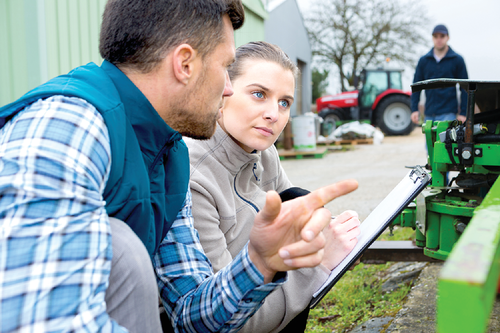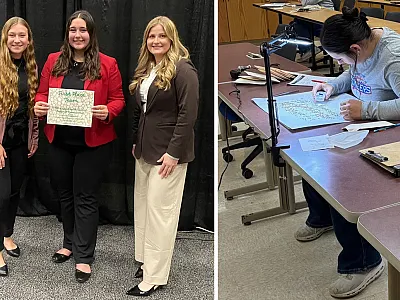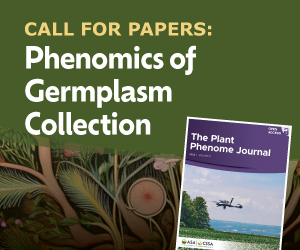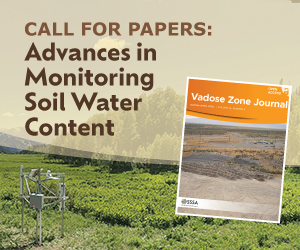Be a Lifelong Communicator: Consider These Three Activities


ASA President joann.
Greetings! March is National Agriculture Month, so I wish you a great month and celebration of National Ag Day on 21 March. I imagine that you have been busy in the past weeks getting ready for planting. For many of us, the winter months are a great time to attend lectures, conferences, and information days; listen to podcasts; or watch webinars or educational videos. It is a time to contemplate the latest ideas and think about how to integrate new technologies and innovations into our field operations.
We deeply appreciate the dynamic agronomic researcher who inspires us to adopt a new cost‐effective agronomic practice. We are grateful for the confidence of the field agronomist who demonstrates a time‐saving technology. We are encouraged by the agricultural policymaker who explains how to navigate new regulations and programs, for our benefit.
All of these individuals—the dynamic agronomic researcher, the confident field agronomist, the encouraging agricultural policymaker—are effective communicators. They are attuned to their audience's mindset and craft their message accordingly. This means that they consider what will motivate the audience to act upon the information they receive.
I'd like to encourage all ASA members to be lifelong communicators by choosing to participate in at least one of the following activities this year:
1. Join a Community Within the Education and Extension Section
Join a Community within the Education and Extension Section (agronomy.org/membership/sections‐communities/education‐andextension or scan the QR code). I am always inspired by the K‐16 Education and Outreach Community and the Extension Education Communities, which have developed top‐notch resources for training diverse audiences in agronomy.
I also want to remind you about the Advancing Agronomy via Public–Private Collaboration Community. This group is working to attract the next generation of agronomists who will develop skills and expertise to handle big agronomic data, evaluate carbon‐farming practices, and develop or implement other innovations. Given the estimated shortage of 85 million workers around the globe by 2030, such initiatives are crucial to recruit enough new professional agronomists to keep feeding the world.
For those who enjoy social media, do consider becoming part of the Learning and Communication Technologies in Education/Extension Community. Its members share a common interest in creating and distributing agronomic knowledge via social media, to educate traditional and non‐traditional learners. Watching the ease with which my pre‐teen daughters create stories on their “Insta” and track their TikTok followers and YouTube subscribers makes me keen to ❤ the “agronomy influencers” of ASA.
2. Present Your Research at the Upcoming Annual Meeting
Plan to present your research findings at the upcoming ASA, CSSA, and SSSA International Annual Meeting in St. Louis, MO acsmeetings.org or scan the QR code. In addition to traditional oral and poster presentations, you can choose the highly popular “5 Minute Rapid” presentation and “Virtual” presentation options. Abstracts can be submitted starting 7 March.
3. Submit Your Manuscript to Agronomy Journal
Submit your manuscript to our internationally respected Agronomy Journal to be peer‐reviewed for potential publication (https://mc.manuscriptcentral.com/agron or scan the QR code). Did you know that many of our members can now publish their accepted papers open access, free of charge? If your institution has signed a transformational agreement with Wiley, our publishing partner, then you have unlimited access to read all of the journals in the Wiley portfolio plus free open access for your publications. For more information or inquiries, please contact Matt Wascavage, Director of Publications, at mwascavage@sciencesocieties.org.
Thank You
A big “thank you” to our Member Services Department for taking the initiative to make our discussion boards more accessible to everyone. In the past, we had access to a limited number of discussion boards via email. Now, you can access the ASA Society‐Wide boards plus our Cross‐Society boards, including DEI. In addition, sign‐up for communities of interest and specialty groups and view those boards and receive updates via your Daily Digest report. Take a look—you may find new agronomic friends in a section or community that you hadn’t interacted with before!View the ASA discussion boards: agronomy.org/discussion‐boards/ or scan the QR code. Add communities and specialty groups: gronomy.org/my‐account/communities/asa and agronomy.org/my‐account/specialty‐and‐working‐groups or scan the QR code.
As always, a very sincere “thank you” from me and the entire ASA Board of Directors, who are here to serve you and represent your professional agronomic needs. Please feel free to contact me, members of your ASA Board, as well as your section and community leaders with your ideas, comments, questions, and concerns. We look forward to hearing from you!
Text © . The authors. CC BY-NC-ND 4.0. Except where otherwise noted, images are subject to copyright. Any reuse without express permission from the copyright owner is prohibited.











